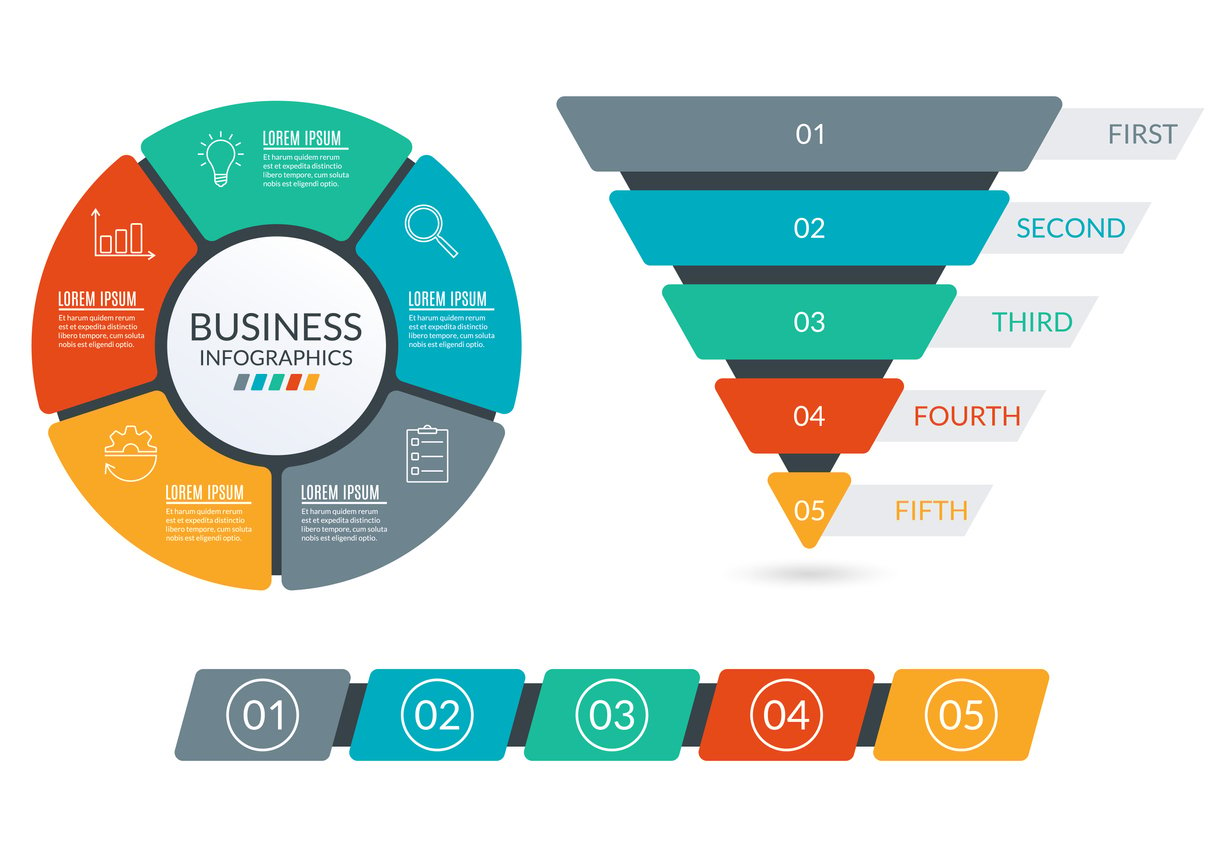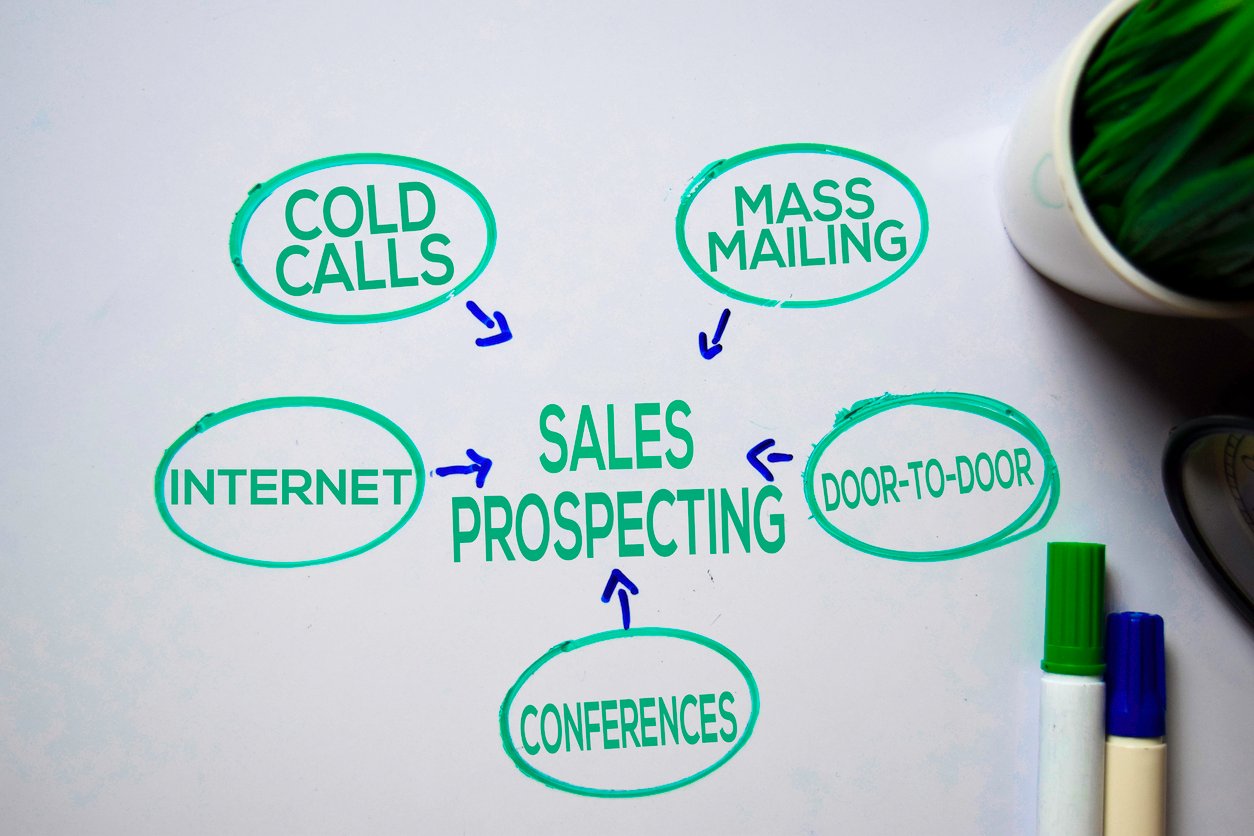
Optimizing Outbound Call Centers: Strategies for Success
 Updated on
Updated on
 By Carlos Correa
By Carlos Correa
Carlos Correa
Carlos has been involved in the sales space for well over ten years. He began in the insurance space as an individual sales agent, managing teams as s...
learn more
Carlos Correa
Carlos has been involved in the sales space for well over ten years. He began in the insurance space as an individual sales agent, managing teams as s...
Table of Contents
Table of Contents
The outbound call center is where phone lines buzz like caffeinated bees, and agents talk more than your chatty Aunt Mabel at a family reunion.
If you've ever wondered how these bustling hives of communication work, you're in for a treat.
Picture this: You're sitting at home, savoring a delicious dinner, just about to take a bite of that perfectly cooked steak, when suddenly, your phone rings. You answer it, and there is the infamous "unknown number." You brace yourself for what's to come, hoping it's not another attempt to sell you a timeshare in the Antarctic.
As you pick up the call, a cheerful voice on the other end introduces itself, and before you know it, you're in the middle of a conversation about a product or service you hadn't even thought about five minutes ago.
Welcome to the world of outbound calling centers, where agents not only talk the talk but also walk the walk—straight into your daily life.
This blog post reveals the inner workings of outbound call centers, the strategies that make them tick, and how they fit into the broader spectrum of lead generation. We promise you might develop a newfound appreciation for the art and science of outbound calling by the time we're done.
What Is an Outbound Call Center?

An outbound call center is a business operation that proactively communicates by initiating calls to reach customers and potential leads. Such endeavors encompass diverse objectives, such as sales, debt collection, conducting surveys, research, fundraising initiatives, and disseminating proactive customer notifications.
Irrespective of the specific objectives, all outbound call centers prioritize maintaining up-to-date contact lists, achieving high call connection rates, and maximizing conversions. The landscape for outbound call centers has evolved significantly over time, primarily driven by the need for increased regulation in response to consumer grievances regarding unwanted telephone solicitations.
Although individual states may have distinct rules, there are two central federal laws and regulations that all outbound call centers must adhere to: the Do Not Call (DNC) Registry and the Telephone Consumer Protection Act (TCPA).
The DNC Registry serves to compile a catalog of phone numbers that outbound call centers are explicitly prohibited from contacting. At the same time, the TCPA has established comprehensive rules governing various aspects of outbound calling, including dialing methods, the use of pre-recorded messages, permissible calling hours, and more. Non-compliance with these regulations can result in substantial financial penalties.
Check out this table highlighting the distinctions between inbound and outbound call centers:
|
Aspect |
Inbound Call Centers |
Outbound Call Centers |
|
Primary Function |
Receive incoming calls from customers and prospects. |
Initiate outgoing calls to customers and prospects. |
|
Call Initiation |
Customer-initiated calls. |
Company-initiated calls. |
|
Objectives |
Customer support, inquiries, order processing. |
Sales, collections, surveys, research, fundraising. |
|
Compliance Regulations |
Adherence to quality and service standards. |
Compliance with DNC Registry and TCPA regulations. |
|
Sales Software and Automation Tools |
CRM systems, call routing, IVR. |
Dialers (predictive, power, auto) for automation. |
|
Agent Availability Management |
Agents respond as calls come in. |
Predictive dialers optimize agent availability. |
|
Call Volume Control |
Varies based on call inflow. |
Controlled outbound call volume. |
|
Customer Relationship Focus |
Reactive, focusing on customer inquiries. |
Proactive, with a focus on sales and outreach. |
|
Customer Information Utilization |
Emphasis on accessing and updating customer data. |
CRM integration for personalized calls. |
Outbound call centers commonly employ specialized software tools known as dialers to enhance operational efficiency and maintain compliance with the above mentioned regulations. These dialers are designed to automate all aspects of the outbound process for call centers, optimizing productivity and effectiveness.
For instance, predictive dialers not only automate the dialing of phone numbers but also leverage advanced algorithms to forecast agent availability, ensuring agents remain occupied and not idle. Additionally, predictive dialers can automatically identify and exclude phone numbers registered in the DNC Registry.
Integrating predictive dialers with customer relationship management (CRM) applications enhances their performance further, empowering agents with customer insights that facilitate more personalized and contextually relevant conversations.
Outbound Call Center Setup

The successful establishment of an outbound call center hinges on careful planning and strategic decision-making. This section explores the essential steps in setting up your call center, from identifying your target audience and budgeting to ensuring your agents are equipped for success.
These elements are the building blocks of a high-performing outbound call center.
Identify Your Target Audience
Defining and understanding your target audience is the bedrock of a thriving outbound call center. This involves conducting thorough market research to gain insights into prospective customers, including:
- Demographics
- Preferences
- Pain points
- Purchasing behavior
By identifying your target audience, you can tailor your communication strategy, ensuring it resonates effectively with the intended recipients.
Moreover, understanding your audience enables you to create highly targeted calling lists, which can significantly improve your call center's efficiency and conversion rates. It allows you to focus your efforts on individuals or businesses more likely to be interested in your products or services.
Decide on a Budget
Budgeting is critical to setting up and operating an outbound call center. It would be best to consider various financial factors, including:
- Infrastructure Costs: These are expenses related to setting up the physical infrastructure, such as office space, workstations, and telecommunications equipment.
- Technology Investments: Outbound call centers rely heavily on technology, including predictive dialers, customer relationship management software, and call monitoring systems. Budgeting for these technologies ensures smooth operations.
- Agent Salaries: Determining agent salaries and compensation packages is a significant cost factor. Competitive remuneration helps attract and retain talented agents.
- Training Expenses: Comprehensive training programs are essential for preparing agents for their roles. Allocating a budget for training materials and resources is vital.
- Operational Costs: Include ongoing expenses such as utilities, office maintenance, and telecommunication services.
A well-defined budget helps you allocate resources efficiently and ensures that your outbound call center remains financially sustainable.
Set New Agents Up for Success
An outbound call center's success largely hinges on its agents' competence, underlining the significance of proper training and onboarding processes.
Training programs should be meticulously designed to cover all aspects of the job, including:
- Product knowledge
- Communication skills
- Objection handling
- Compliance with relevant regulations
Incorporating role-playing exercises and simulations into the training regimen is essential as it provides agents with practical experience in handling various customer scenarios. This hands-on approach significantly enhances their readiness to engage effectively with customers, fostering a deeper understanding of the buyer's journey.
Furthermore, recognizing that learning is an ongoing process is vital. Agents should be encouraged to participate in continuous skill development programs to stay abreast of industry trends and best practices. This commitment to continued learning allows agents to adapt seamlessly to evolving customer needs and market dynamics.
Mentorship and supervision should be considered to facilitate a smoother transition for new agents. Assigning mentors or supervisors to guide them during their initial phases is pivotal in reducing the learning curve, enhancing agent confidence, and fostering a supportive learning environment.
Incentivize Peak Performance
Motivating outbound call center representatives to achieve their best performance is a foundational element of success. The implementation of effective incentive programs holds the potential to significantly elevate agent morale, productivity, and overall job satisfaction.
Performance-based bonuses play a key role in this endeavor. These bonuses or incentives should be directly linked to specific performance metrics, such as sales targets or lead conversion rates. By tying financial rewards to these accomplishments, they serve as potent motivators, driving agents to strive for excellence.
Recognition and awards also feature prominently in motivating agents. Acknowledging and celebrating top performers within the outbound call center through awards, certificates, or public acknowledgments instills a sense of accomplishment and competitiveness among agents, fostering a culture of continuous improvement.
Career growth opportunities are another significant motivator. Providing a clear and achievable path for career advancement within the outbound call center is essential. Agents who perceive opportunities for personal and professional growth are more inclined to remain dedicated to their roles, contributing to long-term success.
Moreover, fostering a sense of teamwork through team-based goals enhances motivation. By setting objectives that require collective effort, agents are encouraged to collaborate and support one another in achieving shared success, reinforcing a positive work environment.
Build Key Lines of Internal Communication
Effective internal communication is the lifeblood of an outbound call center. It ensures that critical information flows seamlessly between agents, supervisors, and management. A well-structured internal communication framework enhances the overall efficiency and responsiveness of the call center.
Here is how you can achieve it:
- Regular Meetings: Schedule team meetings to discuss goals, performance metrics, and challenges. These meetings provide a platform for agents to share insights and seek guidance.
- Reporting Mechanisms: Implement robust reporting mechanisms that enable agents to report issues, feedback, or technical problems promptly. Quick resolution of issues prevents disruptions in operations.
- Training Updates: Keep agents informed about updates in product offerings, sales techniques, and compliance regulations through regular training sessions and updates.
- Feedback Loops: Create a culture of constructive feedback, where agents receive feedback on their performance and have opportunities to provide input on process improvements.
Adequate internal communication keeps everyone aligned with the call center's objectives and fosters a sense of unity and purpose among team members.
Outbound Call Center Management Best Practices

Managing an outbound call center involves a set of best practices that optimize its efficiency and efficacy.
Let's explore these outbound call center management best practices in greater detail.
Set Clear, Realistic Goals
Goals are climacteric in guiding the entire call center team, providing direction, focus, and a measurable framework for evaluating success. It's imperative to ensure that when setting goals, they are clear, realistic, and aligned with the broader objectives of the business.
The following table outlines these key practices in achieving goal-setting excellence.
|
Key Aspects |
Best Practices |
|
Specificity |
|
|
Realistic Expectations |
|
|
Alignment with Business Objectives |
|
|
Regular Assessment |
|
Establishing clear and realistic goals gives the call center team a sense of purpose and a clear direction for their efforts. This approach helps agents focus their energy on achieving tangible results that contribute to the call center's success.
Utilize CRM Reporting and Analytics
Leveraging technology is a fundamental aspect of optimizing outbound call center operations, with CRM systems standing as essential tools in this undertaking. CRM software equips call centers with valuable capabilities for tracking customer interactions, collecting vital data, and generating actionable insights.
One pivotal function of CRM systems is customer data collection. These systems facilitate the comprehensive gathering of customer data, including essential information such as contact details, purchase history, and interaction specifics. This wealth of information is the bedrock for building personalized customer relationships and tailoring call center outbound calls to individual needs.
Effective lead management is another critical aspect. CRM platforms offer the means to efficiently manage leads by segmenting them based on various criteria, including:
- Lead source
- Geographical location
- Level of interest
Such segmentation enables agents to prioritize prospects, allocate resources effectively, and personalize their communication strategies accordingly.
Call monitoring is a real-time monitoring and review feature offered by CRM systems. It ensures adherence to call scripts, compliance with regulations, and maintenance of quality standards. This function not only aids in quality assurance but also allows for timely intervention and feedback to improve agent performance.
Finally, CRM systems provide robust capabilities in analytics and reporting. Call centers can generate reports and analytics dashboards that offer valuable insights into call center performance, customer behavior, and sales conversion rates.
Track the Right Agent Metrics
Effective agent performance tracking relies on understanding key metrics that impact call center efficiency and customer satisfaction.
Here are the essential metrics:
- Talk Time: Measure agent-customer conversation durations to balance thorough interactions without unnecessarily prolonging calls. Monitor average talk time and align it with benchmarks. Offer coaching for agents with excessively long or short talk times.
- After-Call Work (ACW): Track time spent on post-call tasks like notes and updates to streamline processes and improve efficiency. Identify opportunities to reduce ACW while ensuring accuracy. Provide tools and templates for swift transitions to the next call.
- Calls per Agent: Optimize workload distribution and agent productivity by monitoring the number of calls each agent handles. Ensure calls are evenly distributed among agents. Offer training or support to agents with significantly different call volumes.
- Number of Sales and Revenue Per Agent: Gain insights into agent effectiveness in driving business outcomes by tracking sales conversions and revenue. Recognize and reward high-performing agents. Provide targeted training for agents struggling to meet sales targets.
Tracking these metrics systematically allows call center managers to identify areas for improvement, optimize operations, and provide targeted support for enhancing individual and team performance.
How Does an Outbound Call Center Fit Into Lead Generation?

Understanding the role of an outbound call center in the broader context of lead generation is fundamental to unlocking its potential. This section delves into the multifaceted ways in which outbound call centers contribute to lead generation.
Cold Calls and Emails
Outbound call center agents are experts in initiating cold calls and emails, the initial touchpoint between a business and potential leads.
These interactions are designed to introduce products or services, generate interest, and pave the way for further engagement:
- Skillful Cold Calling: Outbound call center agents can effectively engage prospects, present product or service offerings persuasively, and address initial objections or questions.
- Personalized Emails: Email campaigns from outbound call centers are tailored to resonate with the needs and preferences of the target audience. Personalization fosters a sense of relevance and encourages recipients to take the following steps.
Cold calls and emails are the starting points of the lead generation journey. They create business opportunities to establish connections, provide information, and move potential leads closer to conversion.
Supplements Marketing Efforts Through Lead Nurturing
Beyond the initial contact, outbound call centers are critical in lead nurturing. Once a prospect has been captured through various channels, such as websites, social media, or marketing campaigns, outbound call center representatives build and cultivate the relationship.
- Personalized Follow-Ups: Outbound call center agents contact leads via phone, email, or SMS to provide further information, address inquiries, and guide leads through the decision-making process.
- Relationship Building: Lead nurturing focuses beyond transactional interactions. Agents prioritize building rapport, understanding lead needs, and establishing trust to foster long-term relationships.
- Customized Communication: Agents tailor their communication to each lead's preferences, ensuring that the outreach is timely, relevant, and respectful of individual boundaries.
Lead nurturing efforts by outbound call centers are instrumental in moving leads through the sales pipeline. Providing valuable information, addressing concerns, and offering solutions increase the likelihood of conversion.
Before using email or SMS drip campaigns, understand the U.S. SMS compliance. A2P 10DLC allows businesses to send SMS via standard 10-digit numbers. Regulations aim to prevent spam. Long codes (10DLC) are affected by recent legislation; unregistered numbers may be blocked.
To register with Ringy for A2P compliance, follow these steps on the Business Profile tab of the Phone Setup page in your Ringy account. This ensures your SMS and MMS communications remain compliant.
Builds Rapport with Leads and Customers
One of the distinctive strengths of outbound call centers is their ability to build and nurture rapport with leads and existing customers. This rapport goes beyond the transactional aspect of sales; it fosters trust, loyalty, and a positive brand perception.
- Active Listening: Outbound call center agents are trained in active listening techniques, which allow them to empathize with lead or customer concerns and provide tailored solutions.
- Problem Resolution: Agents are equipped to address issues promptly and effectively, demonstrating a commitment to customer satisfaction.
- Personalization: By remembering individual preferences and previous interactions, agents create a personalized experience that resonates with leads and customers.
The rapport built by outbound call centers enhances customer loyalty, encourages repeat business, and can even lead to referrals, where satisfied customers recommend a company to others.
Outbound Call Center Lead Generation Strategies

Practical lead generation necessitates a diverse set of strategies tailored to the unique strengths of outbound call centers.
Let's delve into these lead-generation strategies in greater depth.
Targeted Email and SMS Campaigns
Targeted email and SMS campaigns stand as formidable tools within the arsenal of outbound call centers, providing businesses with the means to engage potential leads directly and convey compelling messages personalized to the audience's needs and preferences.
Here are two ways to improve targeted email and SMS campaigns:
- Segmentation: An essential step in this process involves dividing the lead list into segments based on various criteria, including demographics, interests, or engagement history. This strategic segmentation approach allows for delivering highly targeted messaging that resonates more effectively with specific audience subsets.
- Value Proposition and Call-to-Action (CTA): The content of these campaigns should clearly and concisely communicate the value proposition of the products or services offered. It's imperative to highlight how these offerings address the recipient's challenges or desires. Additionally, a clear and enticing call-to-action (CTA) guides recipients toward the desired action, whether purchasing, scheduling a call, or downloading a resource.
In essence, targeted email and SMS campaigns provide a direct and effective means of communication with potential leads, enabling businesses to initiate and nurture relationships that have the potential to culminate in valuable conversions.
Social Selling
Social selling is a dynamic strategy that capitalizes on social media platforms to connect with prospects and cultivate meaningful dialogues. Outbound call center agents can effectively embrace this approach to expand their outreach and nurture relationships within their target audience.
Agents should prioritize profile optimization as a foundational step. This involves crafting and curating their social media profiles to project professionalism, expertise, and a genuine eagerness to engage with prospects. A well-crafted profile serves as a warm invitation, making a positive first impression on potential leads.
The strategy involves content sharing. Agents should consistently share valuable content that addresses common challenges or questions relevant to their industry. By doing so, they position themselves as knowledgeable sources of information and problem solvers. Sharing insightful content attracts prospects and establishes agents as valuable resources.
Engagement and private messaging also play crucial roles. Agents should actively participate in discussions, respond to comments, and answer questions to foster interactions. Additionally, initiating private messages allows agents to create one-on-one connections to provide personalized assistance or information. This direct engagement builds trust and positions agents as accessible and reliable contact points.
Online Advertising
Online advertising is a potent tool for lead generation, involving various strategies. Pay-per-click (PPC) advertising involves bidding on relevant keywords, crafting compelling ad copy, optimizing landing pages, and A/B testing to attract clicks and convert leads. Display ads utilize visuals to capture attention, require precise audience targeting, and benefit from retargeting campaigns.
Social media ads on platforms like Facebook and LinkedIn rely on audience segmentation, engaging content, lead generation forms, conversion tracking, and constant optimization to drive leads.
Effective online advertising necessitates continuous monitoring and adaptation. Key performance indicators such as click-through rates (CTR), conversion rates, cost per lead (CPL), and return on investment (ROI) should guide your efforts.
By refining strategies based on data-driven insights, you can maximize lead generation and meet your business goals.
Referrals
Encouraging satisfied customers to provide referrals is a potent and cost-effective lead-generation strategy. Outbound call center agents can play a massive role by soliciting referrals from content customers and capitalizing on their trust.
This involves requesting referrals, incentivizing customers who refer new leads that convert, and engaging referred leads with a warm introduction. Referrals carry inherent trust and credibility, making them valuable sources of high-quality leads, which outbound call centers can leverage to foster positive connections and boost conversions.
Outbound Call Center - Final Thoughts
An outbound call center is dynamic in customer engagement, sales, and lead generation. Businesses can unlock their full potential and achieve remarkable results by thoroughly exploring outbound call center's role, management practices, and lead generation strategies.
If you're looking to enhance your outbound calling operations, consider Ringy.
Ringy is a powerful outbound call center solution that streamlines your processes. With features like automated VoIP dialing, CRM, real-time analytics, agent productivity tools, and scalability, Ringy can revolutionize your outbound calling efforts.
Every interaction matters in your journey to outbound call center success. Request a demo today and watch your organization grow from strength to strength.

Skyrocket your sales with the CRM that does it all.
Calling? Check. SMS? Check. Automation and AI? Check. Effortlessly keep in touch with your customers and boost your revenue without limits.

Take your sales to new heights with Ringy.
Sales in a slump? Ringy gives you the tools and flexibility you need to capture leads, engage with them, and turn them into customers.
Subscribe to Our Blog
Enter your email to get the latest updates sent straight to your inbox!
Categories
Related Articles




































































































